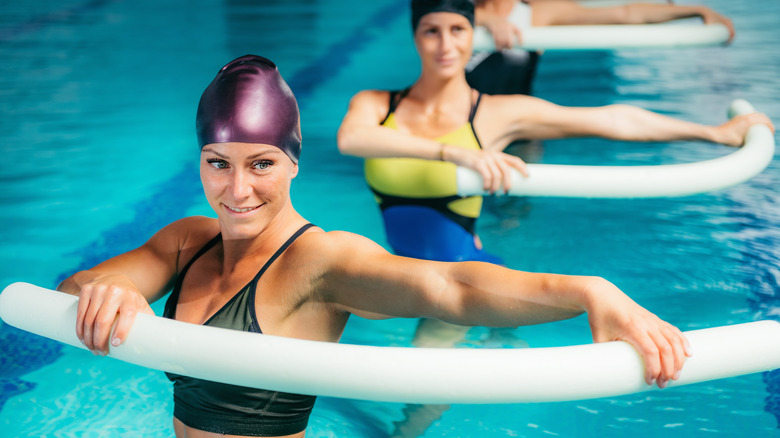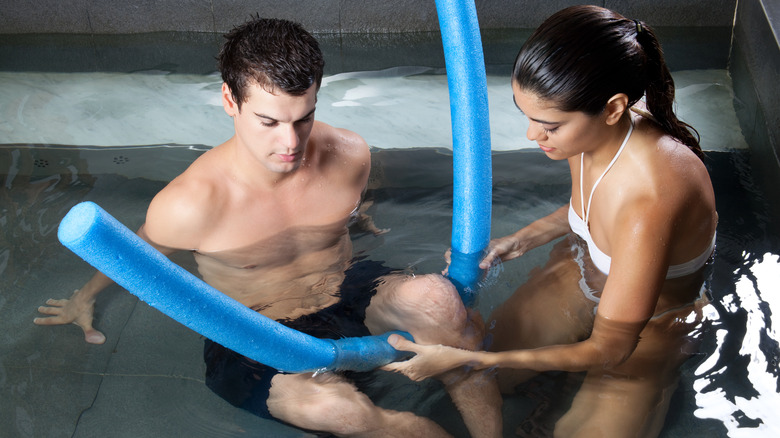Everything You Need To Know Before Trying Aquatherapy
When you think of aquatherapy, or aquatics therapy, you likely picture a group of older women raising their arms above their head and dancing in circles at your local community pool.
Aquatherapy, or pool therapy, consists of a series of exercises that are performed in the water, according to the UP Health System. This form of therapy takes advantage of the buoyancy of water to perform workout routines that would be harmful to certain people outside of the water. This buoyancy and lack of gravity allow for more movement of the body without any of the harmful weight-bearing on the joints that occurs outside of the pool.
The benefits of aquatherapy are numerous. Along with increasing joint flexibility, aquatherapy can increase muscle strength, since water is 600 to 700 times more resistive than air, according to Helen Hayes Hospital. Water itself is also incredibly comforting to the body, decreasing pain by increasing the blood supply to sore muscles.
Additionally, those who do aquatherapy exercises in water above 92 degrees can experience a decrease in abnormal tone, spasticity, and rigidity that can come about as a result of neurological injuries. If you're looking to improve your balance, aquatherapy can provide your body the support and increased time to react without the fear of falling or getting hurt.
You'll want to start slow during your first aquatherapy workout
Before grabbing kickboards or water weights, the Mayo Clinic suggests that newcomers to aquatherapy try water walking. Simply put, water walking is walking in water that is approximately waist-high. While you're walking in the water, be sure that you avoid walking on your tiptoes or leaning too far forward or to the side by tightening your abdominal muscles. After simply walking through the water, you can add even more resistance to the workout by moving your hands and arms through the water in repetitive movements.
There are certain aquatherapy accessories that will likely make an appearance during a class or exercise regimen. Before even trying your first aquatherapy class or workout routine, the Mayo Clinic encourages participants to invest in a pair of water shoes that can help you maintain the traction that you need to stay grounded to the bottom of the pool during workouts. Hand webs and other resistance devices are also popular in aquatherapy.
Though aquatherapy is a beneficial workout for those who struggle with joint issues and other physical ailments, it is important to point out that these workouts burn fewer calories than those that take place on land. Per Chron, the typical 125-pound person will burn 120 calories in an aquatherapy workout versus 165 calories during a low-impact aerobics workout on land.

